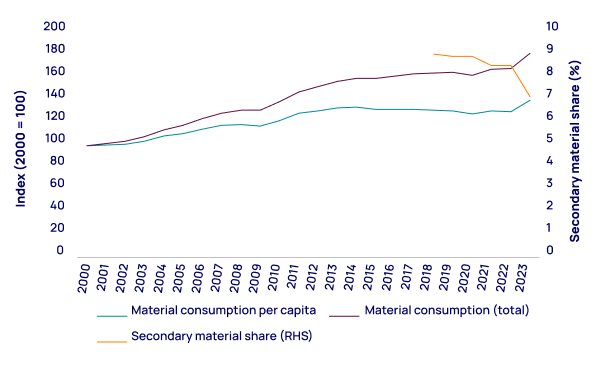Table of Contents
Can you provide examples of organizations driving the circular economy forward and their impact?
Unleashing the Potential of the Circular Economy: How to Make it a Reality
The concept of the circular economy has gained significant traction in recent years as the world grapples with the consequences of rapid industrialization and unsustainable consumption patterns. The circular economy represents a fundamental shift in the way we produce and consume goods, aiming to minimize waste and maximize the use of resources. This article aims to explore the potential of the circular economy and provide practical insights on how to make it a reality.
Understanding the Circular Economy
The circular economy is rooted in the principles of sustainability and efficiency. It is a regenerative system in which resources are kept in use for as long as possible, extracting the maximum value from them while in use, then recovering and regenerating products and materials at the end of their service life. This approach stands in stark contrast to the traditional linear economy, where resources are extracted, used, and disposed of.
In the circular economy, products and materials are designed to be reused, repaired, remanufactured, or recycled, creating a closed-loop system that minimizes waste and environmental impact. This shift not only has the potential to reduce the strain on natural resources and ecosystems but also presents significant economic opportunities for businesses and industries.
The Benefits of Embracing the Circular Economy
Embracing the circular economy offers a wide array of benefits, including:
– Resource Efficiency: By keeping products and materials in use for longer periods, the circular economy minimizes the need for raw material extraction, ultimately reducing resource depletion.
– Waste Reduction: The circular economy aims to minimize waste generation, leading to a significant reduction in landfill usage and environmental pollution.
– Economic Growth: Transitioning to a circular economy presents new business opportunities, such as product refurbishment and recycling services, fostering job creation and economic growth.
– Environmental Preservation: By closing the loop on product lifecycles, the circular economy reduces environmental impact and mitigates climate change.
Making the Circular Economy a Reality
While the concept of the circular economy is compelling, making it a reality requires concerted efforts from all stakeholders, including businesses, governments, and consumers. Here are some practical tips for unleashing the potential of the circular economy:
– Design for Circularity: Businesses can design products with durability, reparability, and recyclability in mind, ensuring that resources are used efficiently and products have a longer lifespan.
– Embrace Renewable Energy: Shifting to renewable energy sources can significantly reduce the environmental impact of production processes, aligning with the principles of the circular economy.
– Implement Extended Producer Responsibility (EPR): EPR programs hold manufacturers accountable for the entire lifecycle of their products, incentivizing them to design for sustainability and take responsibility for recycling and disposal.
– Foster Collaboration: Collaboration across industries, supply chains, and sectors is crucial for advancing the circular economy, as it requires a collective effort to redesign systems and processes.
Case Studies: Driving the Circular Economy Forward
Numerous organizations and initiatives have emerged as champions of the circular economy, driving innovation and demonstrating the feasibility of circular business models. Some notable examples include:
| Company | Initiative | Impact |
| Patagonia | Worn Wear Program | Encourages customers to repair and recycle their clothing, promoting a culture of longevity and reuse. |
| Philips | Circular Lighting | Offers lighting-as-a-service, leasing out lighting solutions and taking responsibility for maintenance and recycling. |
| Ellen MacArthur Foundation | Circular Economy 100 (CE100) | Brings together leading companies to collaborate and drive the transition to a circular economy. |
Unleashing the Potential
The transition to a circular economy is not without its challenges, but the potential benefits far outweigh the obstacles. By rethinking the way we produce, consume, and dispose of goods, we can unlock new opportunities for sustainability, innovation, and economic prosperity. Embracing the circular economy is not only a responsible choice for the planet but also a strategic move for businesses looking to thrive in a resource-constrained world.
the circular economy represents a paradigm shift that holds the promise of a more sustainable and resilient future. By embracing circularity, businesses, governments, and consumers can collectively drive the transition towards a more regenerative and efficient economic model, unlocking unprecedented opportunities for prosperity and environmental preservation.
Global Material Consumption and the Challenges of the Circular Economy The concept of the circular economy, which aims to reduce waste and promote sustainability by reusing materials, has faced significant challenges within the global plastics industry over the past decade. Despite the increasing corporate commitments and regulatory targets, progress in adopting the circular economy model has been slow, particularly in the context of traditional value chains and business practices. Impact of the Circular Economy on the Plastics Industry A recent report by Wood Mackenzie highlights the struggles of the circular economy in the context of the global plastics industry. The report, titled ‘Waste to wealth: Unlocking circular value chains,’ points out that the trend of global material consumption continues to rise, while the share of secondary materials is declining, indicating a lack of progress in the adoption of circular economy principles. Challenges in Value Chain Coordination The report emphasizes the difficulties in ensuring fair value distribution across complex and fragmented value chains. It points out that different stakeholders, such as petrochemical companies, technology firms, and waste management entities, operate with varying assumptions about what constitutes a fair allocation of value. This discrepancy has led to slower adoption of circular economy technologies and inadequate investment in crucial waste infrastructure. The Need for Collaborative Strategies According to the report, it is imperative for commodity-producing firms, particularly in the petrochemical sector, to facilitate greater coordination and collaboration within circular economy value chains. The adoption of new business relationships, such as partnerships, joint ventures, and vertical integration, is essential to drive the necessary transformation and innovation in value chains. Recommendations for the Future The report concludes by offering a set of recommendations to address the initial challenges faced by the circular economy model. These recommendations include a shift in strategic thinking to drive value chain transformation, incentivizing investors to recognize the long-term benefits of circularity, and fostering stronger relationships with brands to establish the complex value chains required for success. Looking Ahead Despite the slow start, the report insists that with clear regulation and creative collaboration, the circular economy model can still offer a viable solution for reducing waste and lowering carbon emissions. It is essential for stakeholders to work together to overcome the existing challenges and unlock the true potential of the circular economy.




